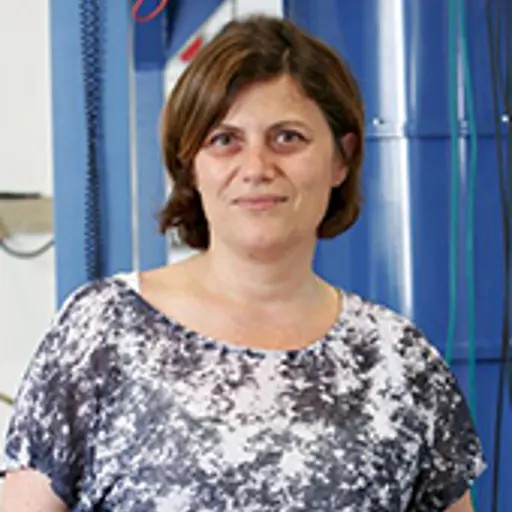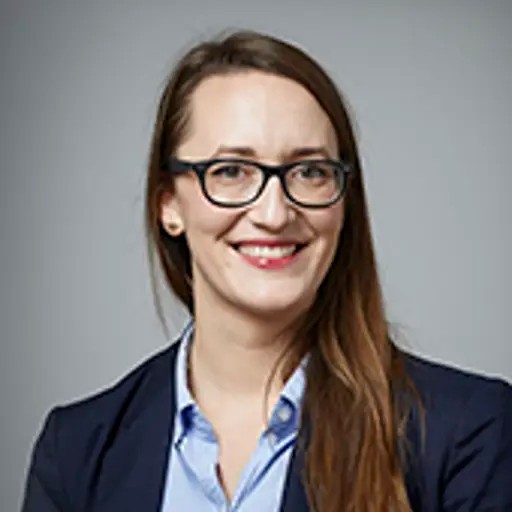
Three Chalmers projects, focusing on a better understanding of future solar cell materials, advancements in photochemistry, and room-temperature superconductivity, have been awarded grants by the Knut and Alice Wallenberg Foundation (KAW).
Out of a total of 30 projects in medicine, natural sciences, and engineering, the Knut and Alice Wallenberg Foundation is awarding project grants to Associate Professor Julia Wiktor, Professor Timur Shegai, and Professor Floriana Lombardi.
After an international peer review process their projects are assessed to have such high scientific potential that they have the possibility of leading to future scientific breakthroughs
“The Foundation's evaluation process is focused on identifying projects that are at the forefront of international research and that can contribute to new knowledge,” says Peter Wallenberg Jr, Chair of the Foundation.
Project: From atoms to devices: Understanding interface phenomena for better perovskite optoelectronics

Electricity is one of the cornerstones of modern society, and its share of the world's total energy consumption is expected to increase from the current 20 percent to over 50 percent by 2050. Therefore, the need for new, environmentally friendly, and energy-efficient methods of energy conversion is substantial and growing. Solar cells will play a key role in this energy transition.
Halide perovskites have been identified as promising materials for solar cells and optoelectronic devices such as LED lights. However, they are relatively unstable and tend to degrade when exposed to factors such as moisture, heat, and prolonged illumination, which leads to degradation over time. The aim of this project is to understand the interfacial properties in existing material systems and, using this improved understanding, to design new interfaces with improved properties and test their performance in actual solar cell prototypes.
The research project is based on a coordinated effort by four research groups, working at Chalmers University of Technology and Linköping University, who will analyse these interfaces in detail, from the atomic level to the scale of full devices. The primary tools for this purpose include the use and development of advanced computational models and experimental methods at the two universities and at international research facilities.
Principal Investigator: Julia Wiktor, Associate Professor at Chalmers University of Technology.
Co-applicants in the project: Paul Erhart and Maths Karlsson, both Professors at Chalmers University of Technology, and Feng Gao, Professor at Linköping University.
Grant: SEK 25 million over five years
Project: Tunable optomechanical microcavities with nanofluidic access for photochemistry under confinement

Photochemical and photocatalytic reactions are crucial for research into new pharmaceutical substances, soil remediation technologies, and sustainable energy solutions. They are involved in the synthesis of new molecular structures, the development of photosensitisers for medical applications, wastewater treatment, carbon capture and storage, and the production of renewable solar fuels.
The potential to improve these processes lies at the intersection of nanotechnology and photonics, particularly in the field of optical resonators and microcavities. Microcavities are extremely small cavities, typically ranging from a few nanometres to tens of nanometres in diameter, which facilitate the trapping and circulation of light. Confining light capture and circulation to a microcavity can significantly enhance light-matter interactions and potentially lead to more efficient photochemical reactions as well as new chemical phenomena.
The research project aims to combine the principles of photochemistry with advances in optical nanoresonator technology and nanofluidics. This integration has the potential to open more efficient and environmentally friendly pathways in material and pharmaceutical synthesis, potentially paving the way for groundbreaking discoveries and new applications.
Grant: SEK 24 million over five years
Principal Investigator: Professor Timur Shegai at Chalmers University of Technology.
Co-applicants: Assistant Professor Angela Grommet and Professor Christoph Langhammer, both at Chalmers University of Technology.
Quantum geometry and flat bands towards room temperature superconductivity

The quest for room-temperature superconductivity is considered a holy grail of modern physics. Not only would it contribute to solving many of today’s energy challenges but also facilitate the integration of quantum computers into society.
The most promising material so far has been a high-temperature superconductor (HTS) based on copper oxide. However, the complex electron correlations and lack of tunability have hindered further progress. Recently, an exciting discovery was made when the much simpler material, bilayer graphene, exhibited superconducting properties. By twisting two layers of graphene at a “magic angle,” a moiré pattern is created, featuring a flat band and strong electron correlations, which in turn give rise to superconductivity.
The research project aims to explore how these moiré patterns and quantum metrics can be used to design the band structure and create flat bands in both high-temperature superconductors and graphene. By combining these two material platforms, the hope is to increase our understanding of the principles behind high-temperature superconductivity and promote superconductivity at higher temperatures, ultimately aiming to achieve room-temperature superconductivity.
Grant: SEK 24 million over five years
Principal investigator: Professor Floriana Lombardi, Department of Microtechnology and Nanoscience, Chalmers University of Technology
Co-applicants in the project: Annica Black-Schaffer from Uppsala University, Ulf Gran and Sergey Kubatkin from Chalmers University of Technology and Johannes Hofmann from Gothenburg University.
Contact

- Full Professor, Quantum Device Physics, Microtechnology and Nanoscience

- Head of Unit, Physics

- Associate Professor, Condensed Matter and Materials Theory, Physics